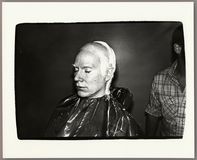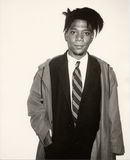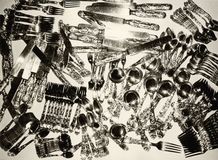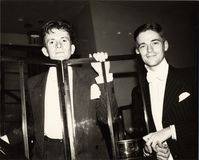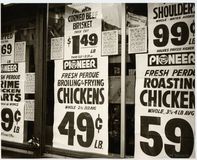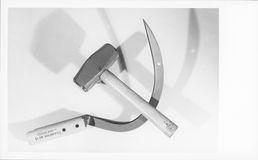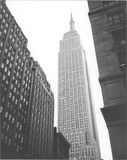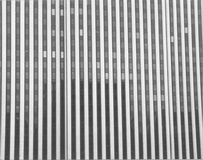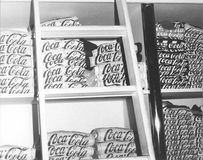
“If you want to know all about Andy Warhol, just look at the surface of my paintings and films and me, and there I am. There’s nothing behind it.” Andy Warhol, The East Village Other, 1966
Andy Warhol was born Andrew Warhola on August 6, 1928, in a two-room apartment at 73 Orr Street in a working-class neighborhood in Pittsburgh, Pennsylvania. Carpatho-Rusyn immigrants from an area in the Carpathian Mountains in what is present-day Eastern Slovakia, his parents Andrej and Julia Warhola had three sons, Paul, John, and Andy, the youngest.
Throughout his life, Warhol fixated on his physical imperfections. In response to his perceived physical flaws, Warhol cultivated different looks through his clothing, wigs, cosmetics, and plastic surgery to change the shape of his nose. His lifelong interest in beauty regimes and skin care made its way into his work, with early paintings depicting a nose job, wigs, and pain relief for corns. After graduating from art school with a degree in pictorial design, Warhol moved to New York City to pursue a career as a commercial artist, and he dropped the final “a” in Warhola. His work first appeared in a 1949 issue of Glamour magazine, in which he illustrated a story called “What is Success?” An award-winning illustrator throughout the 1950s, some of his clients included Tiffany & Co., I. Miller Shoes, Fleming-Joffe, Bonwit Teller, Columbia Records, and Vogue.
Warhol was known for his blotted-line ink drawings, using a process he developed in college and refined in the 1950s. This working method combined drawing with basic printmaking and allowed Warhol to repeat an image and to create multiple illustrations along a similar theme. He could also make color or compositional changes quickly in response to client requests. Warhol self-published a large series of artist’s books in the 1950s. In 1956, he presented a solo exhibition at the Bodley Gallery called Studies for a Boy Book. These sketchbook drawings of portraits of young men and erotic portrayals of male nudes contrasted with the work of other contemporary gay artists, such as Robert Rauschenberg and Jasper Johns, who considered Warhol “too swish.”
In 1960, Warhol turned his attention to the pop art movement, which began in Britain in the mid-1950s. In 1961, Warhol created his first pop paintings, which were based on comics and ads. Warhol’s 1961 Coca-Cola is a pivotal piece in his career, evidence that his transition from hand-painted works to silkscreens did not happen suddenly. The black and gray composition first sketched then hand painted is a blend of both pop and abstraction, which he turned away from at the beginning of his career before experimenting with it again in the 1980s. Warhol turned to perhaps his most notable style—photographic silkscreen printing—in 1962. This commercial process allowed him to easily reproduce the images that he appropriated from popular culture. Among Warhol’s first photographic silkscreen works are his paintings of Marilyn Monroe made from a production still from the 1953 film Niagara. In 1962, he began a large series of celebrity portraits, featuring Marilyn Monroe, Elvis Presley, and Elizabeth Taylor. Warhol made his series of Campbell’s Soup Cans in 1962 and exhibited them the same year in his first solo pop art exhibition at Ferus Gallery in Los Angeles.
In 1963, Warhol began his series of Death and Disaster paintings that used images from magazines and newspapers as well as police and press photographs of suicides, car crashes, and accidents as source material. Warhol produced a range of films between 1963 and 1968, beginning with his first feature-length film Sleep (1963), five hours and twenty-one minutes of poet John Giorno asleep. His groundbreaking eight-hour-long silent film Empire (1964) features continuous slow motion footage of the Empire State Building in New York City. In 1966, he made his most commercially successful film, the three-hour-long, double-screen The Chelsea Girls. In 1964, Warhol moved his studio to a large loft at 231 East 47th Street which became known as the Silver Factory. It was a creative hub for parties and experimentation, from drug use to music and art. Its popularity grew quickly, and it attracted a diverse and inclusive crowd of artists, friends, and celebrities, many of whom posed for short film portraits. With a stationary Bolex camera, from 1964–66 Warhol made almost 500 of these silent four-minute Screen Tests played back in slow motion.
Warhol first began making box sculptures in 1963. Invoking a factory assembly line and enlisting help from his studio assistants at the Silver Factory, he created hundreds of replicas of large supermarket product boxes—including Brillo Boxes, Heinz Boxes, Del Monte Boxes, and more. The finished sculptures were nearly indistinguishable from their cardboard supermarket counterparts, single packing cartons. The Brillo Boxes were first exhibited in 1964 at the Stable Gallery in New York where they were tightly packed and piled high, recalling a grocery warehouse. Warhol became increasingly involved in publishing in the late 1960s, becoming fully immersed in the 1970s. In 1969, he co-founded Interview, a magazine devoted to film, fashion, and popular culture that gave him access to the stars. He published his first mass-produced book, Andy Warhol’s Index (Book), in 1967, and THE Philosophy of Andy Warhol (From A to B and Back Again) was published in 1975. Published posthumously in 1989, The Andy Warhol Diaries chronicle his daily life from November 24, 1976, through February 17, 1987, five days before he died; his assistant and friend Pat Hackett transcribed their daily phone conversations detailing the previous day’s events.
Throughout his career, Warhol frequently collaborated with artists, and in 1984 he worked with young artists Jean-Michel Basquiat, Francesco Clemente, and Keith Haring. When working with Basquiat and Clemente, each artist worked independently on the canvas before passing it along, the artist’s individual marks remaining distinct and recognizable signs and logos becoming part of the compositions. Warhol also returned to hand painting with a brush in the 1980s, something he had set aside in the 1960s in favor of the silkscreen. Warhol took an interest in television and produced two cable shows, Andy Warhol’s T.V. (1980–83) and Andy Warhol’s Fifteen Minutes (1985–87) for MTV. He also made television appearances on The Love Boat and Saturday Night Live, appeared in both print and television commercials, produced music videos, and modeled in fashion shows. Continuing his artistic experimentation, Warhol made a series of digital artworks in 1985 using an Amiga 1000.
During the latter part of his career, Warhol again experimented with abstraction. His Rorschachs (1984) and Camouflages (1986) had no identifiable subject, a notable departure from his earlier works, though they were still immediately recognizable images. In 1984, Warhol was commissioned by Alexander Iolas—who also gave Warhol his first solo show in 1952—to create a series of paintings to be installed opposite the convent where Leonardo da Vinci’s The Last Supper is housed. This commission resulted in one of Warhol’s largest bodies of work, comprised of about one hundred works featuring da Vinci’s The Last Supper.
Nine months before his death, Warhol created a series of iconic monumental self-portraits featuring his gaunt face, fixed gaze, and a spiky wig, some of the canvases measuring nine feet square. On February 22, 1987, Warhol died at New York Hospital in Manhattan due to complications following a surgery to remove his gall bladder. Warhol is buried next to his mother and father at St. John the Baptist Byzantine Catholic Cemetery in Bethel Park, a suburb south of Pittsburgh.
Andy Warhol
Rauschenberg, 1962
Acrylic and silkscreen on canvas
51 x 41 cm 20 x 16 in.
Andy Warhol
Self-Portrait, 1980
Vintage silver gelatin print
20.3 x 25.4 cm 8 x 10 in.
Andy Warhol
Jean-Michel Basquiat, 1986
Silver gelatin print on paper
25.4 x 20.3 cm (10 x 8 in.)
Andy Warhol
Francesco Clemente, 1984
Silver gelatin print on paper
25.4 x 20.3 cm 10 x 8 in.
Andy Warhol
Keith Haring with gun, 1983-84
Silver gelatin print on paper
25.4 x 20.3 cm 10 x 8 in.
Andy Warhol
Silverware, 1982
Silver gelatin print on paper
20.3 x 25.4 cm 8 x 10 in.
Andy Warhol
David McDermott and Peter McGough, 1986
Silver gelatin print on paper
20.3 x 25.4 cm 8 x 10 in.
Andy Warhol
Signs, 1982
Silver gelatin print on paper
20.3 x 25.4 cm 8 x 10 in.
Andy Warhol
Hammer and Sickle, 1977
Silver gelatin print on paper
Sheet: 12.7 x 20.6 cm (5 x 8 in.)
Andy Warhol
Empire State Building, 1970's
Silver gelatin print on paper
25.4 x 20.3 cm 10 x 8 in.
Andy Warhol
Building, 1970's
Silver gelatin print on paper
20.3 x 25.4 cm 8 x 10 in.
Andy Warhol
Statue of Liberty, 1970's
Silver gelatin print on paper
20.3 x 25.4 cm 8 x 10 in.
Andy Warhol
Coca Cola Shirts, 1980's
Silver gelatin print on paper
20.3 x 25.4 cm 8 x 10 in.

